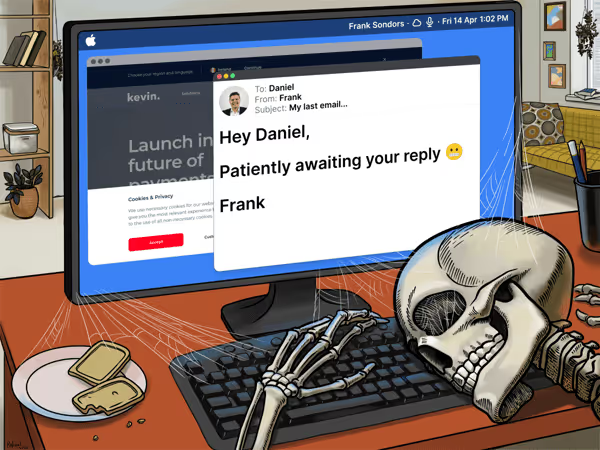Get Noticed in the Inbox: 5 Tips for Using GIFs to Improve Your Cold Email Reply Rate
Introduction
In today's digital age, email is one of the most common forms of communication. However, with so many emails flooding inboxes every day, it can be challenging to stand out and get a response. This is where cold email reply rates come into play. The higher the reply rate, the more successful your email campaign will be. One way to increase your reply rate is by using GIFs in your cold emails. In this article, we will explore the benefits of using GIFs in cold emails and provide tips for incorporating them into your email campaigns.
What is a GIF?
A GIF (Graphics Interchange Format) is a type of image file that supports both animated and static images. It was first introduced in 1987 by CompuServe as a way to display images on slow internet connections. Since then, GIFs have become a popular form of visual communication on social media platforms and messaging apps.
Why Use GIFs in Cold Emails?
Using GIFs in cold emails can make them more engaging and increase the chances of getting a response. According to a study by Experian, emails with GIFs had a 12% higher click-through rate than those without. Additionally, GIFs can help convey emotions and tone that may be difficult to express through text alone.
How to Find the Right GIF
When using GIFs in cold emails, it's essential to find appropriate and relevant ones that align with your message and brand. One way to do this is by searching for keywords related to your message on websites like Giphy or Tenor. You can also create your own custom GIFs using tools like Giphy Capture or Canva.
Tips for Incorporating GIFs into Your Cold Emails
When using GIFs in cold emails, it's important to follow best practices to ensure they are effective and professional. Some tips include keeping them short and simple, using them sparingly, and testing them with a small group before sending them to your entire email list. Additionally, you can use GIFs to add humor or personality to your emails, showcase a product or service, or highlight a call-to-action.
How to Measure the Impact of GIFs
To measure the impact of using GIFs in cold emails, you can track metrics like open rates, click-through rates, and reply rates. You can also use A/B testing to compare the performance of emails with and without GIFs.
Benefits of Using GIFs in Cold Emails
Using GIFs in cold emails can have several benefits, including increasing engagement, conveying emotions and tone, and adding personality to your brand. Additionally, they can help break up long blocks of text and make your emails more visually appealing.
Potential Drawbacks of Using GIFs
While using GIFs in cold emails can be effective, there are also potential drawbacks to consider. For example, some email clients may not support GIFs or may display them differently than intended. Additionally, using too many or inappropriate GIFs can make your emails appear unprofessional.
Best Practices for Using GIFs
To ensure that your use of GIFs in cold emails is effective and professional, it's important to follow best practices like keeping them short and simple, using them sparingly, and testing them before sending them to your entire email list. Additionally, you should always consider your audience and brand when selecting appropriate and relevant GIFs.
Examples of GIFs Used in Cold Emails
Real-life examples of successful GIFs used in cold emails include using a GIF to showcase a product or service, adding humor or personality to an email, or highlighting a call-to-action. For example, a company selling office supplies might use a GIF of someone excitedly opening a package to promote their new product line.
Our favourite would be the ones used by vidu.io

Conclusion: Get Noticed in the Inbox with GIFs
In conclusion, using GIFs in cold emails can be an effective way to increase engagement and improve your reply rate. By following best practices and selecting appropriate and relevant GIFs, you can add personality and humor to your emails while conveying emotions and tone that may be difficult to express through text alone. So why not give it a try and see how GIFs can help you get noticed in the inbox?




